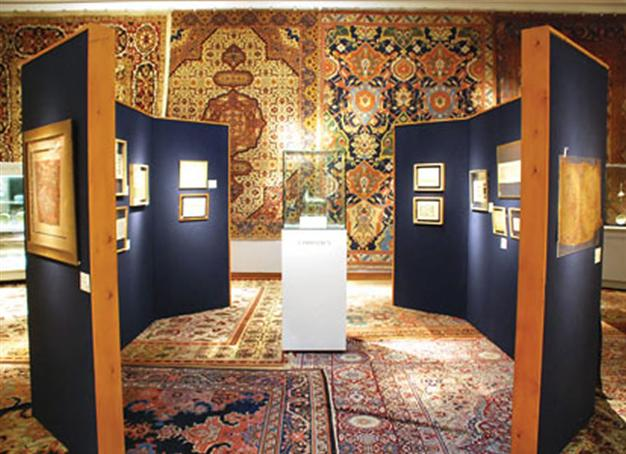Auctioneer Christie’s to sell Islamic and Indian art
ISTANBUL

The auction includes works of art from the seventh century through to the 20th century from Western Europe to Southeast Asia. DHA Photo.
London’s Christie’s, the prestigious worldwide auction group, is planning to sell a number of works from its “Art of the Islamic and Indian Worlds” collection Thursday.
The auction includes works of art dating from the seventh century through to the 20th century from Western Europe to Southeast Asia. The auction includes an array of metalwork; works on paper in the form of manuscripts like Qurans, examples of calligraphy and Indian and Persian album pages; Persian and İznik pottery from small private collections; textiles featuring a group of 13th- and 14th-century embroideries from Central Asia and examples of glass, rock crystal and ivory.
Featuring over 450 lots, the breadth and depth of the sale is expected to excite the antiques market; last spring’s auction saw buyers from across the Middle East to as far away as Tokyo and California. The auction is expected turn over an excess of 10 million pounds.
The sale was kick-started by a recently discovered and previously unknown eighth-century Umayyad sculpture of a deer in bronze with copper inlay from Iran. The sculpture is estimated to be sold for 2,000,000-3,000,000 pounds. The sculpture, a very early example of Islamic art, pre-dates all bronze animals previously sold in Islamic art auctions. Offered from a private Arab collection, the closest comparable is a deer in the Hermitage museum.
The other most significant piece of metalwork is a late 11th-century or early 12th-century silver vessel from western Iran which was made for Najm al-Dawla Khumar Tegin Amir al-Hajj, who supervised the pilgrimage to Mecca from Baghdad. A remarkable survival, this piece, engraved silver bowl traces a historic journey and it is estimated at 700,000-1,000,000 pounds.
The sale also includes a carved Mamluk ivory panel that bears the title of Sultan Baybars II, al-Jashnagir, who ruled for just one year between 1309 and 1310, between the second two reigns of the longest serving Mamluk sultan, Nasir al-Din Muhammad. A rare record of this sultan’s brief reign, it exemplifies the masterful engraving of which the Mamluks were capable.
The Zand painting “A Lady at Leisure,” circa 1770-80, which is estimated at 400,000-600,000 pounds, is a masterpiece by Muhammad Sadiq, whose style embodies the 19th century.
Strong demand for Ottoman works
According to a statement from Christie’s, 2011 has demonstrated the strong and consistent demand for Ottoman Turkish works, which will be included in the auction. The cover lot includes a delightful İznik pottery tankard depicting gamboling animals. From a private collection and passed by descent, the very rare piece is metalwork. It is a near match with an example in the Louvre in Paris.
Over 85 Indian works will also be featured in the sale, with a particularly wide array of jewel-like miniatures and metalwork. The section is led by a previously unknown Indian miniature was recently discovered in an attic. The meeting of Maharja Mudhoji Bhosle sen Sahib, the rajah of Nagpur, and Maharaja Ishwari sen Bahadur, the rajah of Mandi, in an early 19th century style exhibits fantastic portraiture, with each person individually identified in the panel. The works is estimated at 50,000-70,000 pounds.
